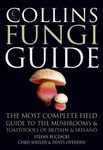![Use of Entomopathogenic Fungi in Biological Pest Management Use of Entomopathogenic Fungi in Biological Pest Management]()
Click to have a closer look
About this book
Related titles
About this book
The implementation of pest management tactics coupled with the concomitant changes in production systems are leading to increasing reliance on biological control agents such as entomopathogenic fungi. Microbial insecticides based on entomopathogenic fungi are now important components of biological control of several insect pests of agriculture and disease vectors. Their importance has long been recognized as an integral part of pest management in crop production and forestry, and in the protection of man and his animals. The importance and unique advantages of microbial insecticides are well documented numerous treatises have dealt with methodologies and accomplishments. Many important advances have been made and new opportunities for their application continue to emerge based on new knowledge.
With increased understanding of taxonomy, ecology and genetics of these fungi, coupled with their pathogenic properties and application methods, the scientific underpinning of entomopathogenic fungi has broadened and several products (mycoinsecticides) have found their way into the commercialization chain. Despite the documented successes, critical reviews in research advances in various laboratories around the world are needed to facilitate further research, development and application of mycoinsecticides for the management of crop pests and disease vectors.
The chapters in this book aim to generate insight from the vast domains of knowledge in fungal entomopathology that is becoming consolidated and also foster speculations about new directions for research in different fields. Well-known experts in the field of entomopathogenic fungi have written these chapters. The target audience of the book is the general scientific community and it should assist researchers, teachers and students in the understanding and application of entomopathogenic fungi in biological pest management. The potential for greater and significant advances cannot be overemphasized and the several insights into new areas of research that are highlighted in the book should make the use of entomopathogenic fungi even more effective.
Customer Reviews























